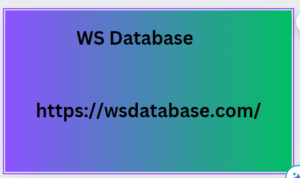Conquering Client Chaos:
In today’s competitive landscape, fostering strong client relationships is the cornerstone of business success. But as your client base expands, managing their contact information can quickly transform from a breeze into a logistical nightmare. Scattered emails, forgotten preferences, and outdated information can hinder communication, compromise efficiency, and ultimately, damage your brand image. Fear not, fellow business leaders! This comprehensive guide equips you with the strategies and tools to effectively manage your client contact database, nurturing stronger connections and propelling your business forward.
The Power of a Well-Managed Client Contact Database:
Enhanced Communication: Imagine sending personalized emails to clients based on their interests or project history. A clean and well-organized database ensures your messages reach the right inboxes, sparking deeper engagement and fostering trust.
Improved Efficiency: Stop wasting time searching for contact details or piecing together client information from various sources. A well-managed database offers a centralized location for all client data, allowing you to focus on building meaningful relationships.
Smarter Segmentation
Effective client management hinges on WS Database understanding your client base. A well-organized database allows you to segment clients based on demographics, preferences, or project types. This enables you to tailor marketing campaigns, personalize communication, and deliver exceptional service.
Data-Driven Decisions
A well-managed database unlocks valuable insights. Analyze client demographics, track communication trends, and identify client preferences. This data empowers you to make informed decisions about marketing strategies, resource allocation, and overall client engagement.
Compliance with Regulations: Data privacy regulations like GDPR and CCPA demand that businesses obtain explicit consent before sending marketing communications. A well-managed database facilitates compliance by clearly indicating verified users who have opted-in for your updates.
Building a Robust Client Contact Database Management System:
Choose the Right Tools: Explore your options. Consider spreadsheet software like Excel or Google Sheets for basic client management. For advanced functionalities, consider free or paid Customer Relationship Management (CRM) platforms.
Design a Clear Structure: Define the information you need to track for each client. This might include contact details, company information, project history, communication logs, and notes.
Standardize Data Entry
Establish clear guidelines for data entry. This ensures consistency (., date format, phone number format) and simplifies future data analysis.
Embrace Data Hygiene: Regularly UNEARTHING HIDDEN GEMS review and update your database. Remove outdated information, identify and address duplicates, and maintain data accuracy to prevent communication errors.
Leverage Automation (Optional): Explore automation features offered by CRM platforms. Automate tasks like sending birthday greetings, follow-up emails, or appointment reminders, freeing up valuable time.
Strategies for Long-Term Management Success:
Regular Backups: Schedule regular backups of your database to prevent data loss in case of technical issues.
Collaboration Protocols: If multiple users access the database, establish protocols for data entry and editing to maintain consistency and avoid conflicts.
Continuous Monitoring: Track key metrics like email deliverability rates and unsubscribe rates. This data can reveal areas for improvement in your communication strategies and database management practices.
Invest in Data Security: Implement strong data security measures to protect sensitive client information. These might include password protection, access controls, and encryption.
By following these strategies and employing the right tools, you can transform your client contact database from a disorganized mess into a powerful tool for client relationship management. Remember, a well-managed database is an investment in building trust, optimizing communication, and ultimately, driving sustainable business growth.
SEO Optimization Tips for Your Article:
Targeted Keywords: Include relevant keywords throughout the article, such as “client contact database,” “client management,” “data hygiene,” “client communication,” and “CRM.”
Meta Description: Craft a compelling meta description that summarizes the article’s value proposition and attracts potential readers searching for solutions to manage their client contact databases.
Headings and Subheadings
Utilize clear and concise headings and subheadings to structure your content and improve readability.
Internal Linking: Link to relevant internal pages on your website that provide further information on CRM solutions or data management best practices.
Image Optimization: Include high-quality images with descriptive alt tags depicting managing client contact databases.
By incorporating these SEO tips, you can increase the discoverability of your article and attract website visitors seeking to optimize their client contact database management practices.






